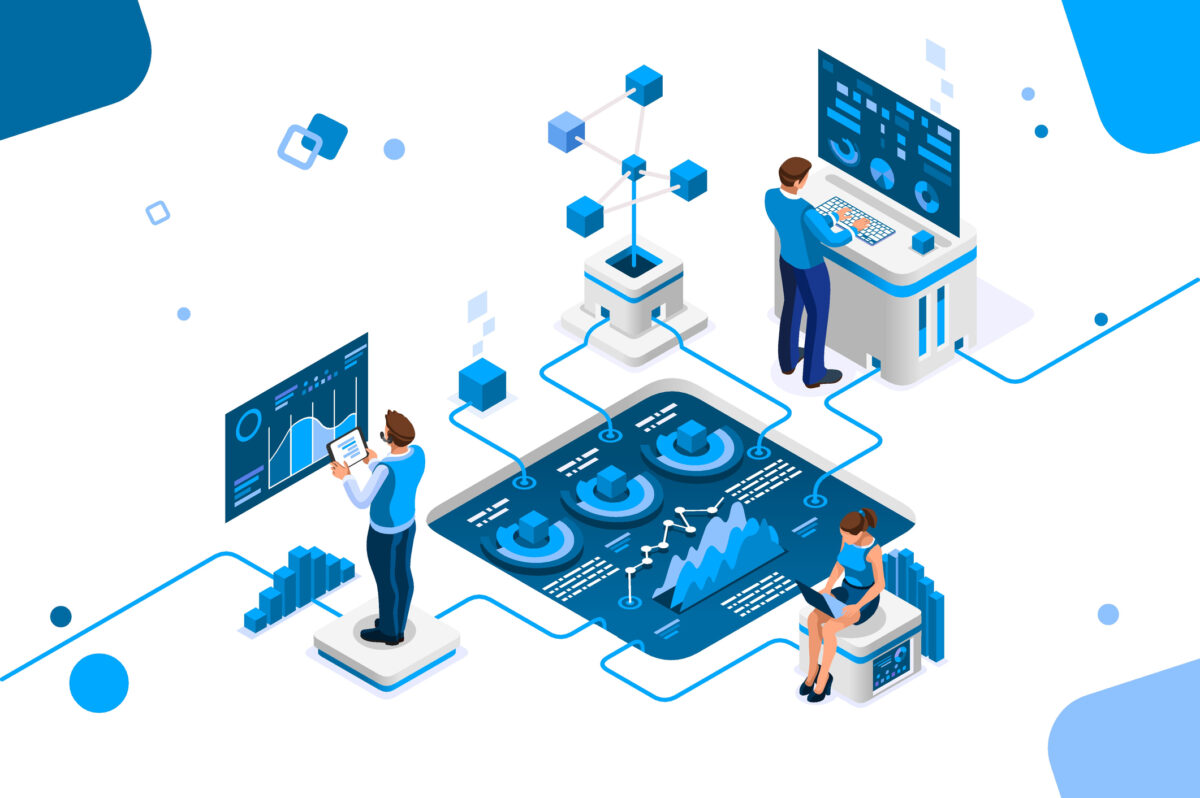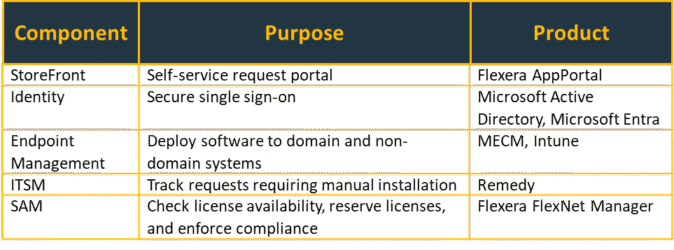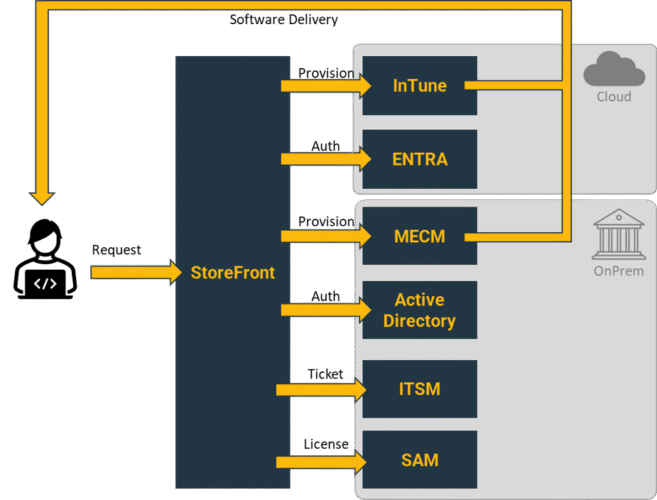Resources
Back to AllHow to Converge SAM, ITSM & Endpoint Management for Faster, Clearer IT

Outcomes Delivered
- Reduced average software delivery by 90%: from 35-45 days to 3 days
- Pre-approved software delivered in ~20 minutes
- Manage 5,800+ requests per month for 417 software and 164 hardware items
- Serve 66,000+ users with automated workflows
- Automated approvals and deployments reduce help desk workload
- Increased License Compliance by 73%, preventing misuse and ensuring compliance
Background
A customer was struggling with a homegrown software request tool that had become a bottleneck. It was slow, difficult to maintain, and approval workflows caused delivery delays of 30–45 days. The help desk was overwhelmed with tickets, and users had little visibility into the status of requests.
The customer partnered with InSequence to implement a solution that would streamline requests from submission to deployment, improve governance, and reduce support overhead.
Converging SAM, ITSM, and Service Delivery
The customer adopted a new approach that converges Software Asset Management (SAM), IT Service Management (ITSM), and Endpoint Management using Commercial Off-the-Shelf (COTS) products combined with InSequence expertise. Key objectives included:
- Complete visibility of hardware and software inventory
- Normalized product naming for consistent tracking
- Integration with identity and ITSM platforms
- Automated and manual workflows tailored to request scenarios
Converged Architecture Powers Automation
The solution leverages five core components to enable automation and scalability:

StoreFront leverages Flexera AppPortal, SAM utilized Flexera FlexNet Manager, ITSM utilized BMC Remedy, Endpoint Management utilized Microsoft InTune and MECM, and Identity leveraged Microsoft Entra and Active Directory. In addition, the architecture’s ITSM capability can be migrated from Remedy to ServiceNow with very minor impact.
The architecture enables fast, automated software delivery for both on-premises and remote users by converging SAM and ITSM.

Outcomes Delivered
Faster Delivery, Lower Overhead
The customer saw immediate results after rollout. Software delivery times dropped to an average of 3 days. In addition, delivery now takes about 20 minutes for pre-approved software. The system handles over 5,800 requests per month for a catalog of 417 software and 164 hardware items. Moreover, the system serves more than 66,000 users.
Reducing Manual Work Through Automation
The system uses over 180 dynamic questions to collect request details, reducing the need for follow-up. Approved requests trigger automatic updates to Active Directory security groups, and software is deployed without manual intervention. Finally, Remedy tickets are created and tracked for requests that need human involvement.
Licensing and Compliance Built In
StoreFront integrates with SAM to check license availability before approval. A reservation is created when licenses are available. Users are added to synchronized security groups that automatically grant and revoke licenses for Adobe and Microsoft products. This prevents license misuse and ensures compliance when users leave the organization.
Converging SAM and ITSM provided visibility into the majority of the customer’s hardware and software, assembling normalized reports that allow leadership to actively control technology spend. The customer went from actively managing 0% of their software licenses to actively managing 76 software vendors (including major complex vendors) and 241 software licenses, achieving full awareness and compliance for 73% of those licenses, a significant milestone in the customer’s SAM maturity.
Help Desk Relief and Smarter Routing
The customer has reduced help desk volume by automating approvals and deployments.
- Users can submit requests on behalf of others for team or bulk orders
- Hardware requests routed based on device type, replacement, or configuration needs
Managing Access and New Products
- Controls access to specialized software by limiting catalog visibility to specific department
- Specialized software catalog visibility is limited to authorized departments
- Lifecycle workflows support new software and hardware testing, authorization, and acquisition
Strengthening Software Governance
- Centralized workflows provide better oversight of software usage, licensing, and access
- Role-based access ensures only authorized users can request specialized software
- Reduces risk, prevents misuse, and enforces compliance
Conclusion
This project didn’t just replace a tool, it transformed the customer’s approach to software and hardware requests. Faster delivery, embedded governance, and reduced support overhead shifted operations from reactive oversight to proactive control, improving compliance, reducing risk, and making software management more accountable, transparent, and scalable.


